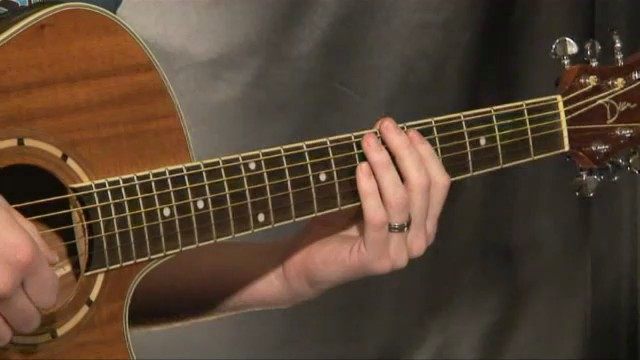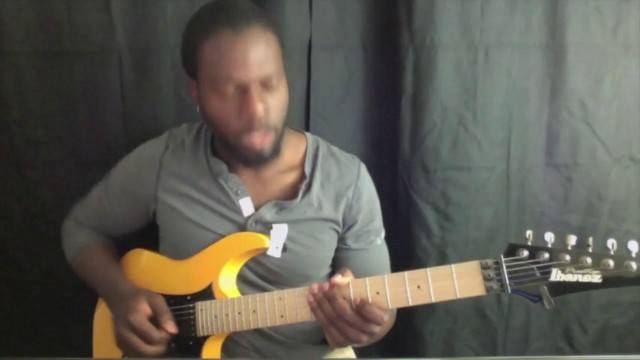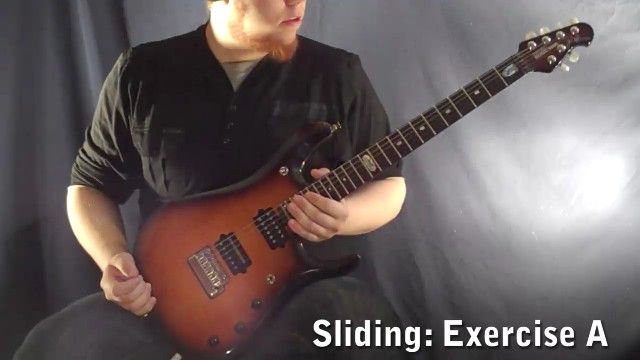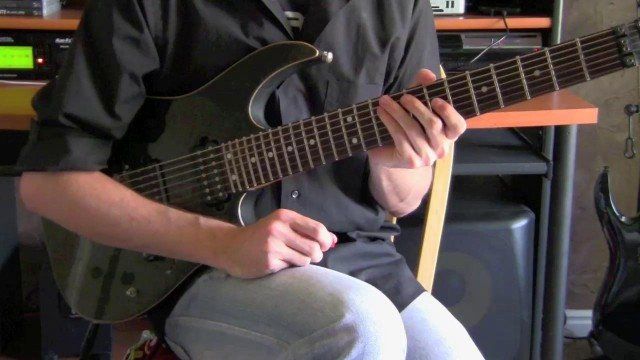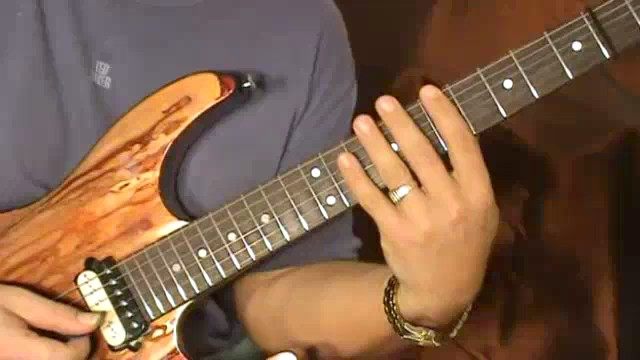"Killing The Noise" When Tapping
Ex. 1: Here we see a very basic tap lick - an A minor triad spread out over three frets on one string.
Remember, we aren't worried about note choices and interesting licks/shapes at the moment - let's solidify our muting techniques so that we have a good foundation for knowing what to do with our own licks to make them as crisp and clean as possible. Check out the video demonstration and notice the techniques involved in keeping it clean; the right hand is further up the fretboard and muting with a different part of the hand/arm - this provides us with having an anchored hand and good posture for being accurate, as well as a great source for muting. It works much the same way as before, though, we'll be muting any strings that aren't involved with the lick which are above the involved strings.
Ex. 2: The exact arpeggio, except at the opposite extreme; the low E string.
Not much explaining to do here! The only real difference is the left hand involvement in the muting process is much more apparent as all strings (which the exception of the low E) are being choked by this hand (incorporating a "barred" index finger, as discussed in part 1).
Ex. 3: Here's where things get tangly; string-skipping.
String transitions are always an issue for those with problems in the muting department. The rapid firing of the muting techniques discussed should provide for the maximum clarity - it just takes practice. Check out the demonstration video and analyze how from the first octave arpeggio to the second, the techniques shift fairly rapidly. Make sure each transition is well defined and as clean as possible. PRACTICE SLOWLY!
Ex. 4: Have it together? Let's take it one step (octave) further!
Again, make sure both hands are working together in avoiding bum notes. Your goal is to hear the pattern at hand with little to no interference!






